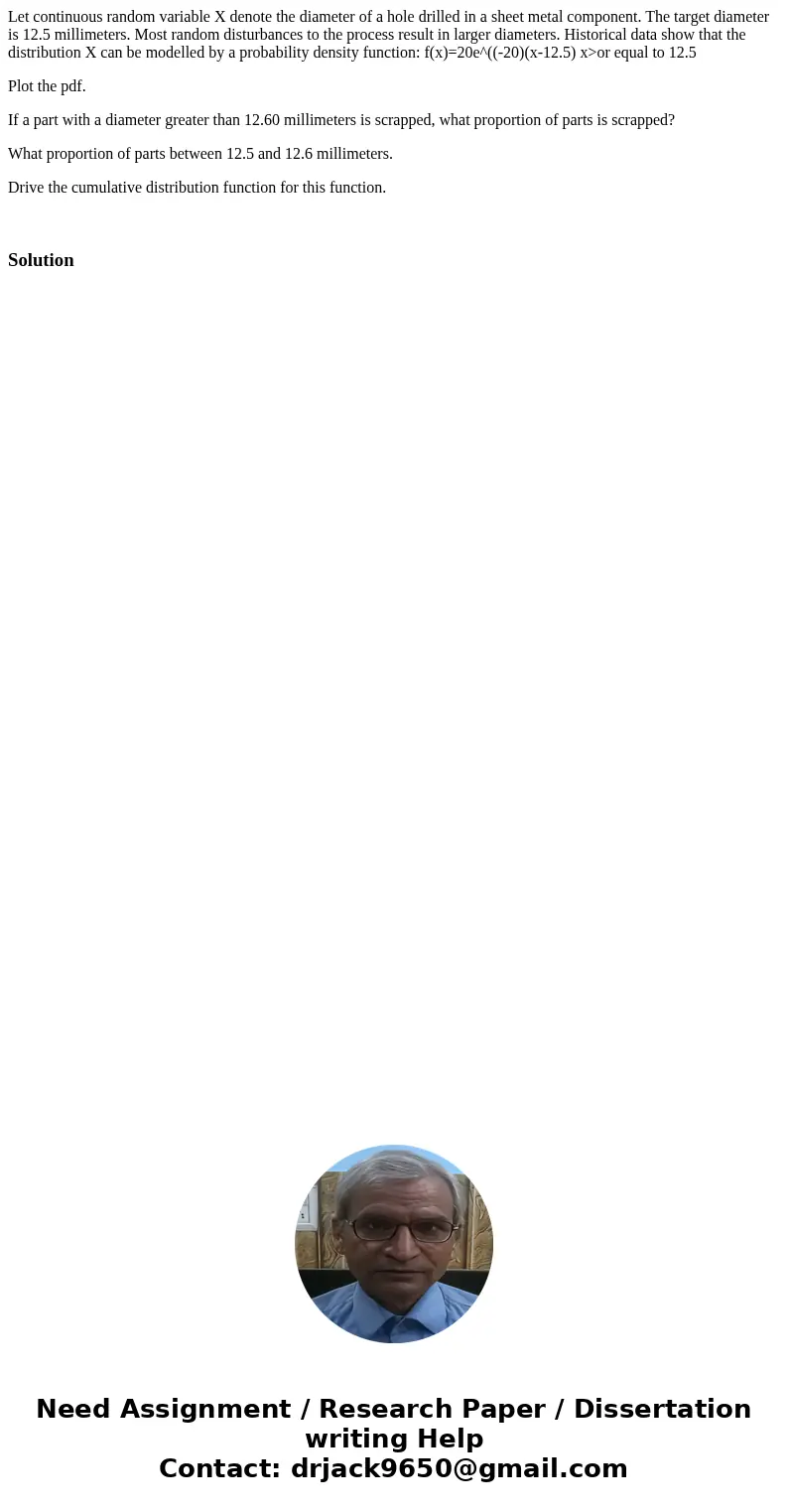Let continuous random variable X denote the diameter of a ho
Let continuous random variable X denote the diameter of a hole drilled in a sheet metal component. The target diameter is 12.5 millimeters. Most random disturbances to the process result in larger diameters. Historical data show that the distribution X can be modelled by a probability density function: f(x)=20e^((-20)(x-12.5) x>or equal to 12.5
Plot the pdf.
If a part with a diameter greater than 12.60 millimeters is scrapped, what proportion of parts is scrapped?
What proportion of parts between 12.5 and 12.6 millimeters.
Drive the cumulative distribution function for this function.
Solution

 Homework Sourse
Homework Sourse